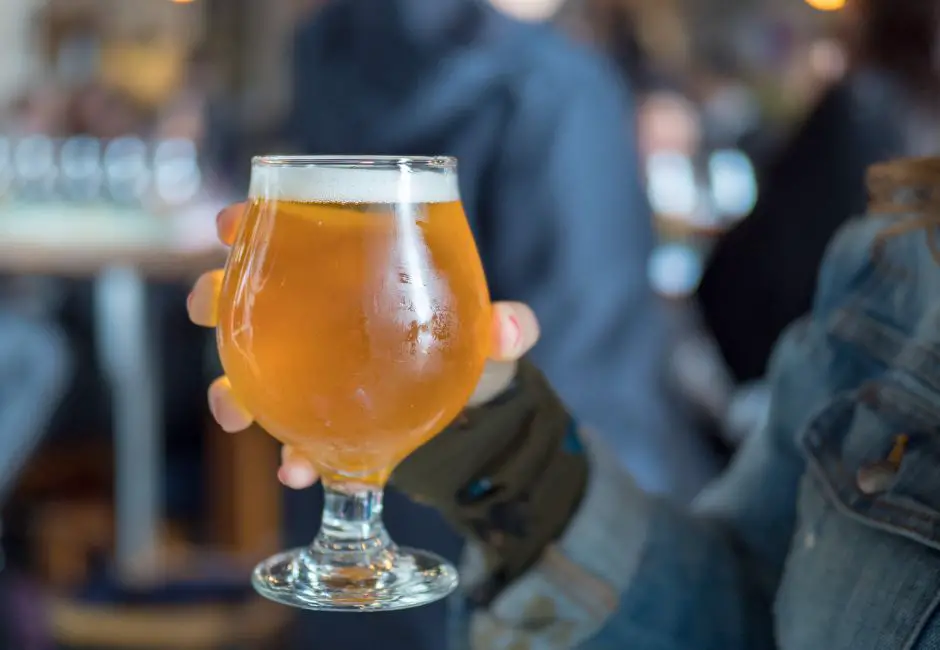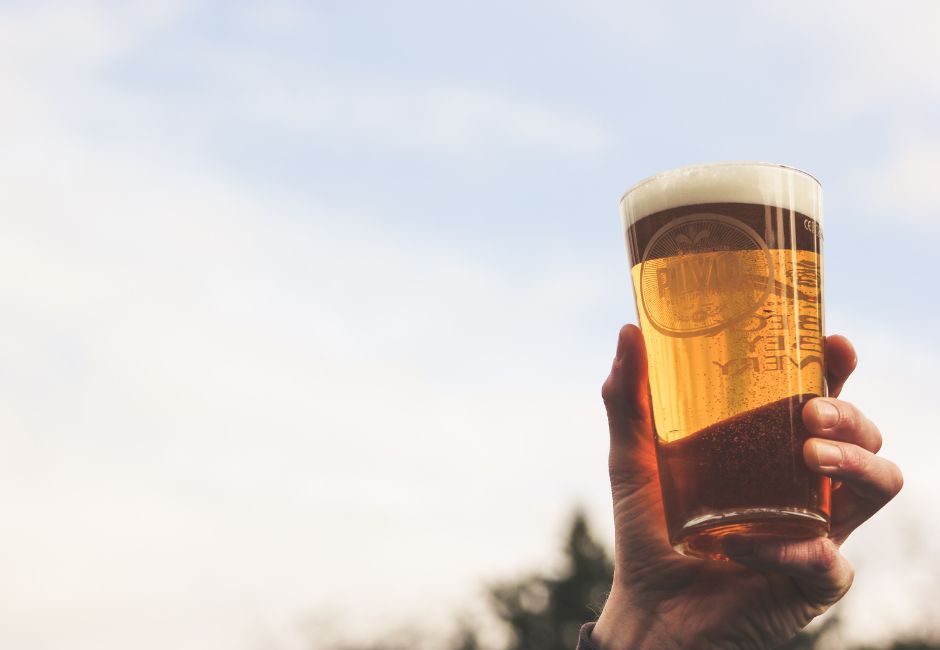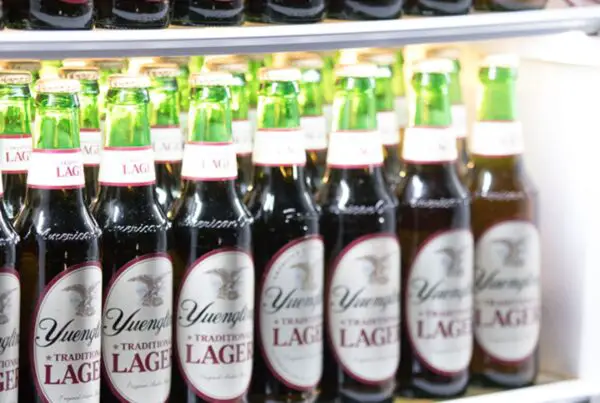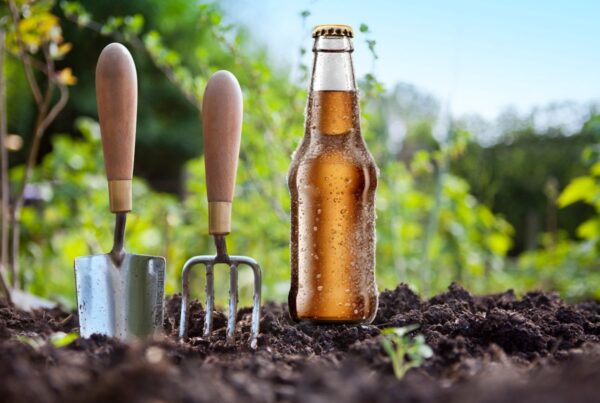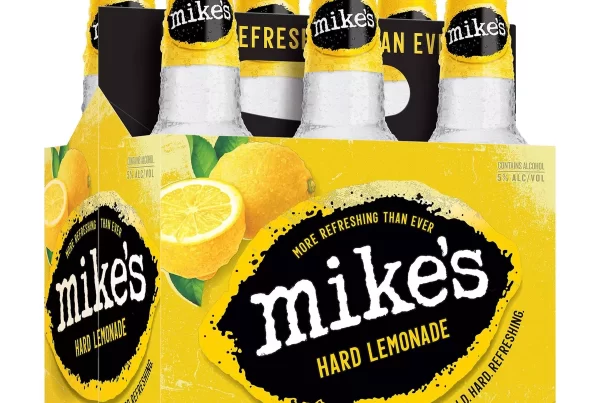Pouring a beer is an art in itself. From the effervescence of the liquid to the formation of the head, the simple structure of beer is a dance of bubbles and foam that tantalizes the senses.
Understanding what you’re looking at when it comes to the structure of a beer can help you anticipate its taste, aroma, and mouthfeel. It’s like being able to appreciate a painting beyond just its colors—knowing the techniques and brushstrokes used can give you a deeper appreciation for the artist’s skill. In the same way, understanding the structure of beer can give you a deeper appreciation for the brewer’s craft.
Of course, some of us just want to drink our beer without analyzing every micro-bubble and isohumulone. And that’s perfectly fine. But for those who want to delve deeper into the world of beer, let’s take a closer look at the basic structure of beer and how it affects the drinking experience:
The Basic Structure of Beer
The Head
When you pour a beer, you can see its simple structure: a colored, bubbly liquid beneath a layer of whitish foam.
The head, the frothy cap of bubbles that forms atop your glass (also sometimes referred to as the collar) is the result of proteins from malted grains and compounds from hops known as isohumulones. The process of bubbles forming in beer is called nucleation.
A thick, creamy head can enhance the beer’s aroma and add to the overall drinking experience. It can also help to balance out the sweetness of the malt and the bitterness of the hops. A very thin head, on the other hand, can make beer taste (and feel) flat and lifeless.
The head may or may not stick around at the top of your pint after a pour—and whether it does or not depends on a few factors:
Head retention, or the ability of the foam to persist, is crucial to the overall beer experience. While CO2 helps create foam, the way the beer is made will determine if—and how long—the foam sticks around.
Guinness uses a mixture of CO2 and nitrogen for its famously rich, foamy head, because nitrogen doesn’t dissolve in water as easily, meaning it’s available to foam more.
Should All Beer Have a Strong Head?
The head is just one aspect of a beer’s structure, and while a strong head is widely looked at as a positive, it’s not necessarily an end goal for every brewer or every style of beer.
However, knowing what influences a stronger or weaker head can give you a preview of what you’re about to taste:
- Malt-derived proteins and high alpha-acid hops yielding isohumulones are key factors for a strong head.
- Generally, moderate ABV levels also contribute to a stronger beer structure.
The shape of your beer glass can also encourage the head to persist longer: a taller, narrower Pilsner glass will keep the foam around longer better than a short, wide glass. A dry glass also works better for foam retention than a wet one. Some beer glasses even have fine etchings (nucleation points) inside to encourage the creation of more bubbles—these are known as “nucleated glasses.”
In addition to these, any factors that increase a beer’s viscosity (thickness) contribute to foam retention. Since a beer’s viscosity goes up as temperature goes down, a chilled beer will naturally have a stronger, more stable foam head than a more room temperature beer.
Lacing
As you drink your beer, you may notice the pattern of foam left behind on the glass. This residue actually has a name: it’s called lacing, and it’s closely tied to the strength of the foam head.
It’s not necessarily that important or indicative of a beer’s quality—despite what some self-proclaimed connoisseurs may tell you. (Because, you know, sometimes you need a visual reminder that you’re drinking a good beer.) All kidding aside, it’s more of an aesthetic feature of a beer than anything else.
While lacing may not affect the taste of your beer, it does make for some pretty cool Instagram photos. (Just make sure to hashtag #beerbubblesnottroubles.)
That said, beers that leave “better” lacing tend to have stronger foam heads—these include nitro stouts (like the aforementioned Guinness, which has one of the most distinctive lacing patterns of any beer), IPAs, and some other ales and lagers. Beers with high hop levels also tend to leave more noticeable lacing behind in the glass.
Final Thoughts
As with any art form, the beauty of beer structure is in the eye of the beer holder. And while lacing may be mostly aesthetic, the dance of bubbles that lingers at the top of your beer isn’t just a visual spectacle; it’s an essential part of the beer-drinking experience.
Still, everyone has their own preferences. Some like a thick, creamy foam head, others prefer less foam*, and others couldn’t care less as long as the beer tastes good.
*Note: For those who look for less “foamy” beer because they’re trying to avoid feeling bloated, it’s worth noting that a strong head will actually result in a less carbonated beer overall—in other words, less actual carbon dioxide ending up in your stomach. Science!
Beer Reviews
If you’re interested in exploring further, check out Hops Hunters’ beer reviews. Our reviews touch on the beer’s foam head, taste, mouthfeel, and overall experience. Whether you’re looking for a clean, crisp lager or a bold, complex ale—our reviews can help guide you to the perfect brew.

